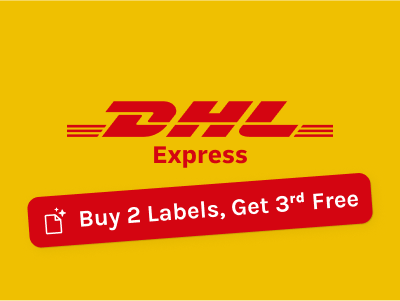Pretend, for a moment, that you are not an online merchant but a customer who has ordered something online. Simple enough, you’ve likely been in this position before. Now, let’s take it further. Let’s say you owe something from a country other than where you live. You spend days watching the UPS® tracking page, monitoring your package’s journey. Then, day’s turn into weeks. You realize your package, which is urgent, hasn’t moved an inch in weeks.
Sound familiar? This all-too-familiar conundrum happens often. The cause of the delay? Packages failing to clear customs. Incomplete or incorrectly completed customs paperwork can cause delays at customs, and you may find yourself having to pay extra charges for non-compliance.
If not handled with care, UPS® customs clearance can lead to unhappy customers across the border, and spell doom to your eCommerce business.
As an international carrier that processes millions of shipments every day to different destinations across the world, you can take advantage of UPS® customs clearance expertise to make these formalities a breeze.
This article will help you understand customs declarations, the services offered by UPS®, a step-by-step guide on how to deal with UPS® customs paperwork and insight on how you can leverage Easyship’s features to navigate UPS® customs formalities.
What are UPS® Customs Forms?
UPS® requires a number of forms for goods shipped internationally. Typically, these documents are issued by governments to monitor and regulate the movement of goods across borders. These forms are very important, as they ensure compliance with international shipping regulations in different countries, navigate treaty arrangements, government regulations and settle customs duty rates with ease.
Most importantly, without complete and accurate documentation, your goods will be held at customs. This will result in delays that will prevent your cargo from reaching its destination. You may also get slapped with hefty non-compliance fines. Not to mention that the longer your goods languish, the more confused, disappointed and frustrated your customers will grow.
Some of the forms required to pass through customs include the commercial invoice, Certificate of Origin (CO), NAFTA Certificate of Origin, and Shipper's Export Declaration (SED).
What Services Does UPS® Offer to Help with Customs?
UPS® offers several services to help you deal with customs clearance. They include:
Customs clearance
You can work with a UPS® custom broker on brokerage services including international trade consulting and tax clearance. Their services ensure all your paperwork is filled correctly to ensure compliance and timely delivery of your shipments. UPS® customs clearance helps ensure that 97% of all shipments are cleared the same day.
Trade compliance services
UPS® international trade consulting services help you understand international market regulations that can impact your business. Through this service, UPS® provides a custom assessment of complex requirements and compliance issues to make sure that your shipments are customs compliant, mitigate potential issues and move goods more quickly across borders.
Brokerage and compliance
With this service, UPS® helps maintain compliance with international trade regulation, navigate complex trade agreements and manage the movement of goods across borders with confidence and ease.
UPS® Zone Solutions
UPS® provides turn-key solutions that will help you realize more profits through your eCommerce store by making foreign trade zones easier to use.
UPS® trade management
UPS® helps you reduce risk and total cost through import and export licenses, duty drawback, security initiatives, compliance procedures, free trade agreement management, denied-party screening and product classification.
Import/Export Technologies
From UPS® Entry Management System and UPS® Customer Collaboration Tool to Quantum View & Flex Global View software, UPS® gives you the latest technology tools to make your UPS customs clearance process easier.
Related: How to Deal with DHL Customs Formalities (And Avoid Delays)
{{ save-money-on-every-shipment }}
How Does UPS® Manage Customs?
UPS® puts several measures in place to help customers navigate customs regulations when sending goods across borders. First, the company processes shipments following international rules and regulations on restricted and prohibited products that cannot be sent to some countries. They also follow international standards when shipping dangerous goods, meaning you may have to pay additional duties for such products on top of regular charges.
Here are some things that may need to know about UPS® customs clearance.
- UPS® has over 80 years of of experience on customs brokerage and clearance
- UPS® has over 400 customs brokerage offices in over 40 countries and serves over 50,000 small & mid-market companies
- The company has a dedicated team of experts that helps you handle UPS® customs clearance, ensuring that the process runs smoothly in compliance with industry standards, regulations and ethics.
- The UPS® customs clearance team has a robust relationship with customs authorities in different countries
- UPS® customs clearance relies on the latest technology to make the process of handling your customs paperwork hassle-free
Does UPS® Customs Require Payment?
Yes, UPS® Customs is a paid service.You will need to pay customs clearance fees. How much you’ll pay depends on government tariffs on the particular items you intend to ship.
To figure out how much you need to pay, you’ll need to contact the carrier and find out how they calculate duties and taxes.
You can also get a rough estimate of your duties and taxes by using Easyhip’s free calculator. Simply input the origin and destination of your shipment, its value and the category of items it contains to get an accurate estimate of the duties and taxes that you need to pay.
- Multi-line Entry: First three lines free. Then $3.1/line
- In-Transit Bond: $80
- Warehouse Storage Fee - Air/Ground, per Day After Two Days: $20.00 + $.04 per lb. per day
- Fish & Wildlife (F&W) Entry Preparation: $25.00
- Foreign Trade Zone (FTZ) Entry: Upon request
- Partner Government Agency (PGA) Clearance: $25.00
- Prior Notice for Food and Food Products: $10.00
- Warehouse Entry: $132.50
- UPS® Broker of Choice: $50.00 OnSite/$50.00 OffSite
- Customs Entry Packet: $1.00 per packet or shipment
- Disbursement Fee: 2% of Duty/Tax (minimum $12.00)
- Marking Notice Processing: $80.00
- Post Entry Services: $95.00 / $120.00
- Pre-Release Notification: $12.50 per shipment
- Transportation Handling: $30.00
Step-by-Step Guide of Dealing with UPS® Customs Paperwork
Here's a step-by-step guide that will help you with UPS® customs paperwork and take your international shipping game to the next level by avoiding costly mistakes that can result in unnecessary delays at customs.
- First, make sure that you access and fill the official UPS customs forms, and use the correct trademark or incoterms used internationally for the trade or shipping of cargo
- Give a detailed description of the sender, including their full name and address, and provide their VAT number for commercial goods
- Next, fill out the waybill and print it
- Then, disclose the relevant information about your shipment by providing an accurate description of goods, such as weight and the number of pieces included in the package
- Enter the appropriate commodity or harmonized codes
- Record the country of origin for each item and state the value of each item
- Next, calculate the subtotal of each item type, then enter the total value of the whole package
- Specify the type of invoice you are creating — commercial or pro forma
- Finally, provide a full declaration with your name, date and signature, and attach your UPS® customs forms properly on your package
Navigating UPS®'s Customs Formalities with Easyship
The first step to successful international trade is knowing how to navigate customs formalities in different countries. Incorrectly filed forms or incomplete documentation can result in your shipments being held at customs, resulting in delivery delays, or attracting hefty fees for non-compliance.
To make the process of handling customs paperwork easy for you, UPS® provides customs clearance and compliance services to keep your packages moving across borders stress-free.
To help you further, Easyship works with UPS® and can connect you to UPS® customs clearance services, and help you prepare your products for shipment through pre-filled customs declarations and automated shipping labels.
Sign up for a free account today to start navigating UPS® customs formalities with Easyship.
UPS® Customs FAQs
Why is my UPS® package being held in customs?
Most of the time, your package is held at customs while awaiting the payment of duties and taxes, or simply because of some clearance delay. Once the import or export duty has been paid and your package cleared, it is allowed to continue in transit.
Can I speed the UPS® customs Clearance process?
Yes, of course. Instead of going it yourself, you can take advantage of the UPS® team's expertise in dealing with customs. They will help you expedite your UPS® customs clearance process and get your shipments moving quickly.
What is the UPS® customs phone number?
You can contact UPS® customs brokerage via +1-888-253-2748 or +1-440-243-9326.















































.svg)
.svg)






.avif)
.avif)

.avif)
.avif)


.avif)


.avif)










.avif)
.avif)



.avif)
.avif)


.avif)
.avif)


.avif)











.svg)










.webp)